Last updated on
Discover the versatile ways to fill apothecary jars in your kitchen, adding both functionality and style to your culinary space.
Apothecary jars are a versatile and stylish addition to any kitchen decor. Not only do they add a touch of elegance, but they also serve as functional storage containers for various items.
However, with so many options available, it can be challenging to decide what to put in them. Fear not! In this article, we’ll explore some creative and practical ideas for filling your apothecary jars in the kitchen.
From pantry staples to decorative elements, we’ve got you covered. So let’s dive in and discover how you can elevate your kitchen’s aesthetic while keeping things organized and accessible!
What's Inside
Choosing the Right Jars
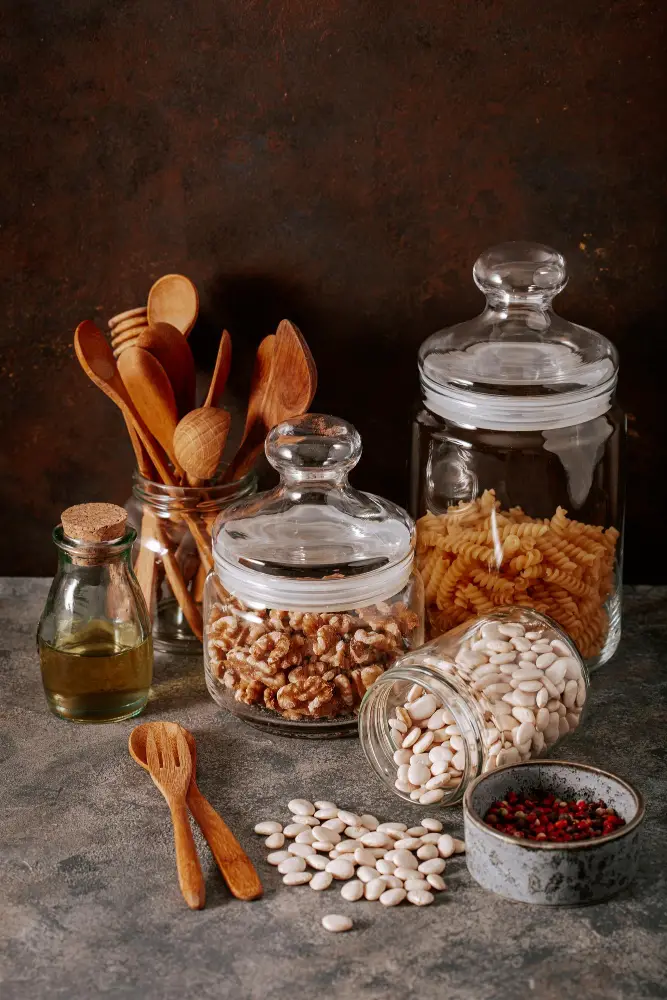
First and foremost, you want to ensure that the jars are food-safe and made of high-quality materials such as glass or ceramic. This will prevent any unwanted chemicals from leaching into your food items.
Next, think about the size and shape of the jar. Consider what you plan on storing in them; smaller items like spices may require smaller jars while larger ingredients like pasta or grains may need bigger ones.
Another factor is style – choose a design that complements your kitchen decor while also being functional for storage purposes.
Lastly, don’t forget about lids! Airtight lids will help keep your ingredients fresh longer by preventing moisture from getting in.
Dry Food Storage
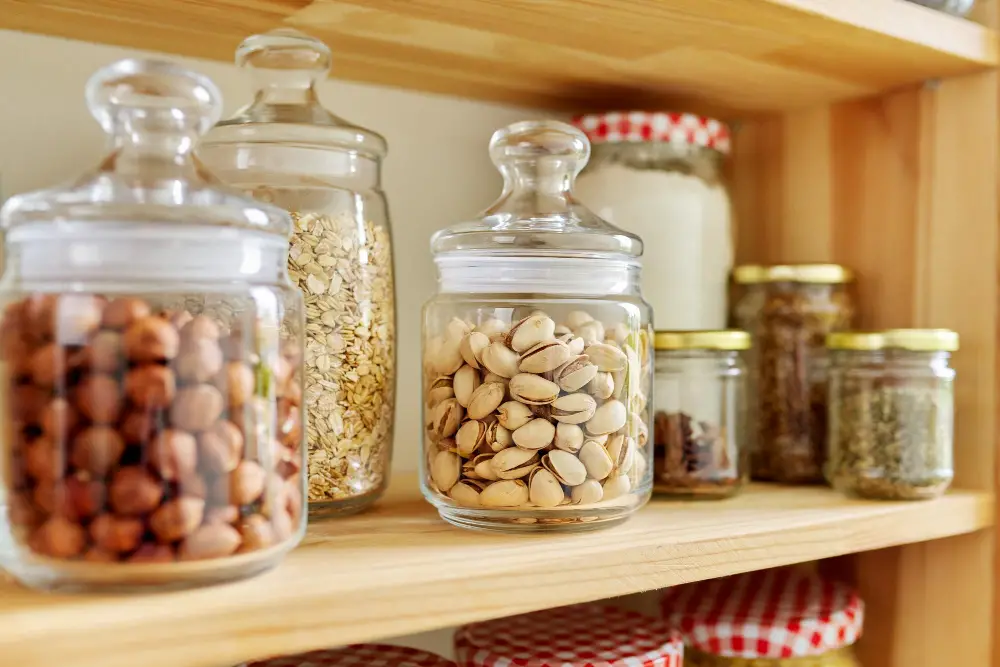
Not only do they keep your pantry organized and tidy, but they also help to preserve the freshness of your food. When choosing apothecary jars for dry food storage, look for ones with airtight lids that will prevent moisture from getting in.
You can use different sizes of jars depending on the quantity of each item you want to store.
To make it easier to identify what’s inside each jar at a glance, consider labeling them with chalkboard labels or stickers. This way you won’t have to open every jar just to find what you’re looking for.
Some great options for filling apothecary jars in this category include:
- Cereal
- Granola
- Dried fruits
- Nuts
- Seeds
- Flour
- Sugar
Spices and Herbs
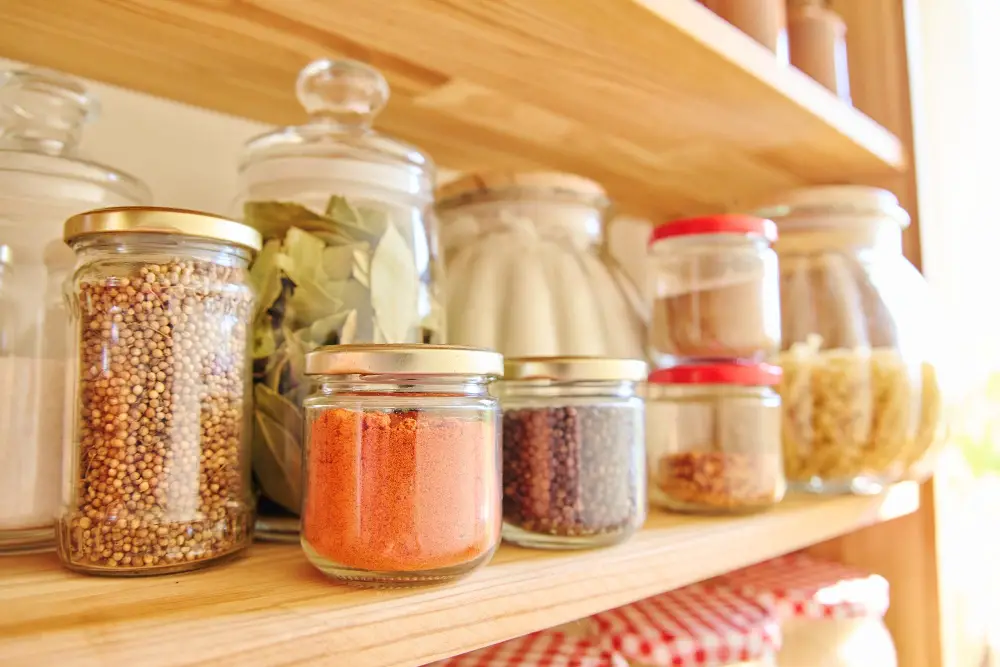
Apothecary jars provide an elegant solution for keeping your spices and herbs organized while adding a decorative touch to your culinary space. Fill the jars with whole or ground spices such as cinnamon sticks, peppercorns, cumin seeds, or dried rosemary sprigs.
You can also use them for storing fresh herbs like basil leaves or thyme sprigs by placing them in water-filled jars just like flowers.
To make it easier to identify each spice and herb jar’s contents quickly, consider labeling the lids with their names using a label maker or chalkboard paint pens. This way you won’t have to open every jar when looking for that one particular ingredient.
Apothecary jars are not only practical but also aesthetically pleasing when displayed on shelves or countertops near your cooking area. They add color and texture while keeping everything within reach during meal preparation time.
Baking Ingredients
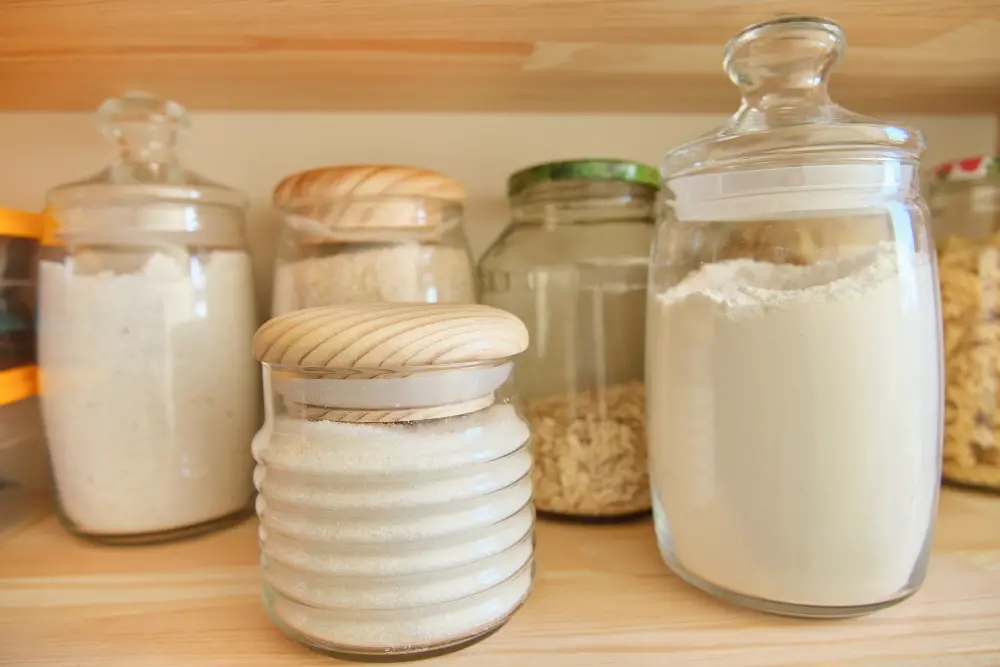
Not only do they keep these items fresh and easily accessible, but they also add a touch of charm to your kitchen decor. For instance, you can fill a large apothecary jar with all-purpose flour or brown sugar and place it on the countertop next to your mixer for easy access while baking.
You can also use smaller jars to store specialty flours like almond or coconut flour that you may not use as frequently.
Another great idea is using apothecary jars for storing chocolate chips or other small toppings like sprinkles or nuts that you might need when making cookies or cakes. This way, everything is within reach when it’s time to bake without having multiple bags cluttering up your pantry shelves.
Coffee and Tea Storage
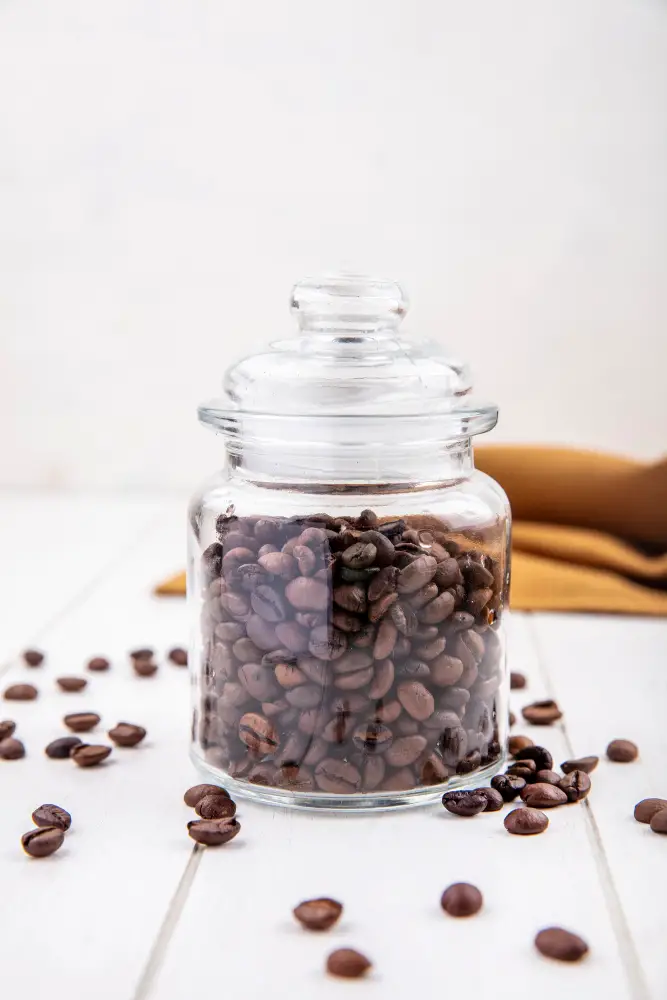
Not only do they keep your coffee or tea fresh by protecting them from light and air exposure, but they also add a touch of elegance to your kitchen countertop. You can use different sizes of apothecary jars to store various types of teas or coffees separately.
For instance, you can use small-sized jars for loose-leaf teas while larger ones for whole bean coffee. To make it easier to identify the contents inside each jar quickly, consider labeling them with chalkboard labels or tags that match the decor in your kitchen.
This way you’ll always know which jar contains what type of tea blend or roast level without having to open every single one. In addition to being functional storage containers for hot beverages’ ingredients like sugar cubes and honey sticks can be stored in smaller apothecary jars alongside the main attraction -coffee beans/tea leaves-.
With these simple tips on how best to utilize apothecary jars as part of your kitchen organization strategy; you’re sure not only going have an organized space but also a stylish one!
Pasta and Grains
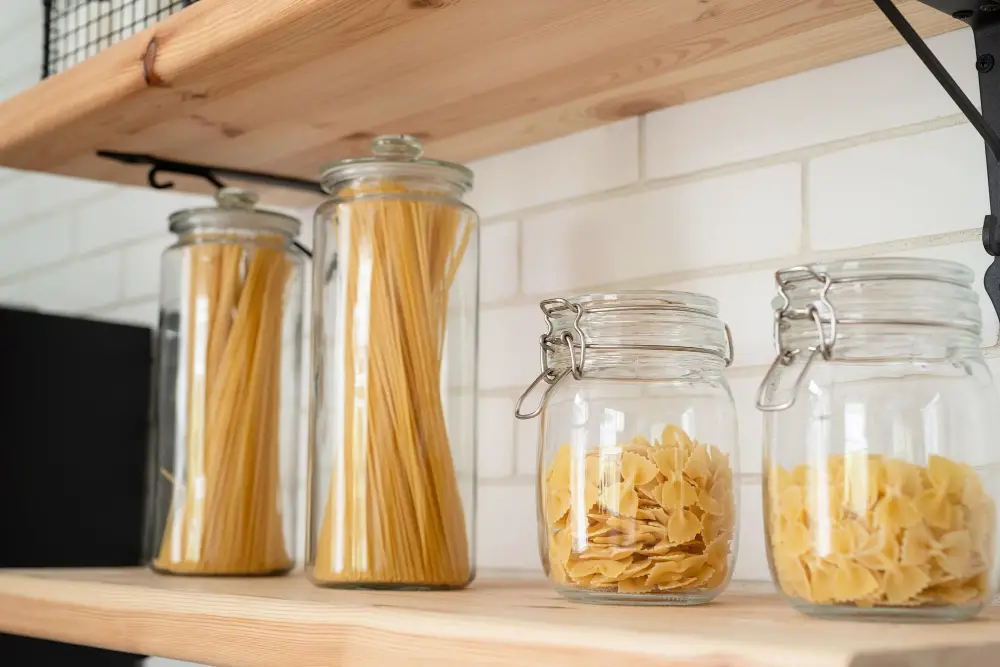
Not only do they keep your pasta, rice, quinoa or other grains fresh for longer periods of time but also make it easier to see when you’re running low on supplies.
When filling apothecary jars with pasta or grains, consider the size of the jar. Smaller jars work well for shorter pastas like macaroni or penne while larger ones are ideal for spaghetti noodles.
For smaller grain varieties such as couscous or bulgur wheat opt-in medium-sized containers.
To add an extra touch of elegance to your kitchen decor try layering different types of pasta shapes inside one large jar creating a colorful display that is both functional and visually appealing.
Labeling each container will help you quickly identify what’s inside without having to open every single jar looking for specific ingredients. Using apothecary jars as storage containers is not only practical but also adds aesthetic value by keeping things organized while adding visual interest at the same time.
Nuts and Seeds
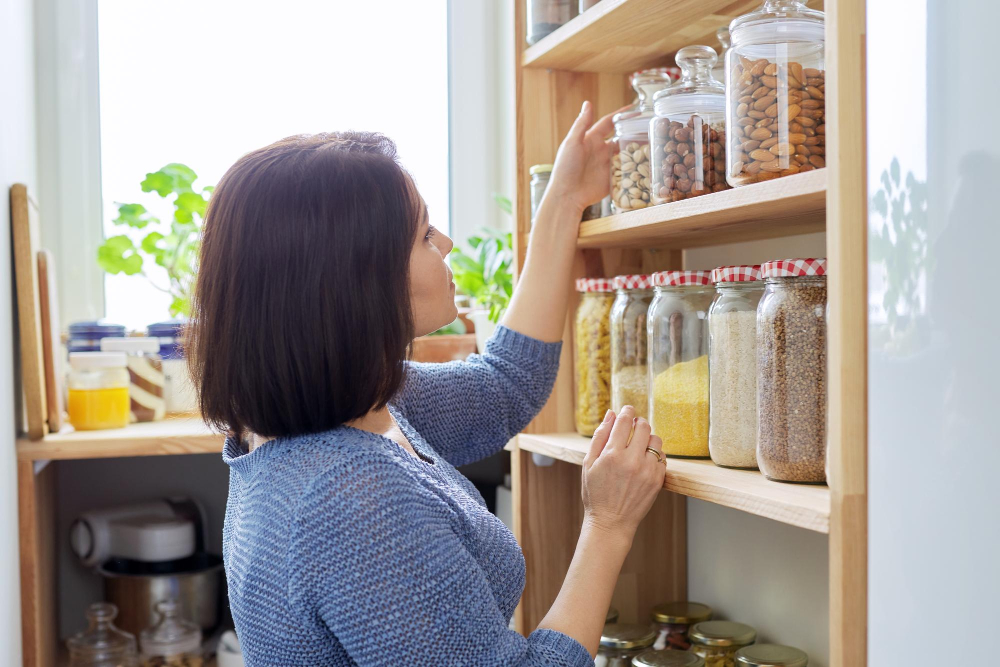
These jars not only keep the nuts and seeds fresh but also add an aesthetic appeal to your kitchen decor. You can fill the jar with mixed nuts, almonds, cashews, walnuts or any other nut of your choice.
Seeds like pumpkin seeds, sunflower seeds or chia seeds are great options too! They make a perfect addition to smoothies or as toppings on salads. You can even mix them up with some dried fruits for a delicious trail mix.
When storing nuts and seed in apothecary jars it is important to ensure they are completely dry before placing them inside the jar. This will prevent moisture from building up which could cause mold growth over time.
Cooking Oils and Vinegars
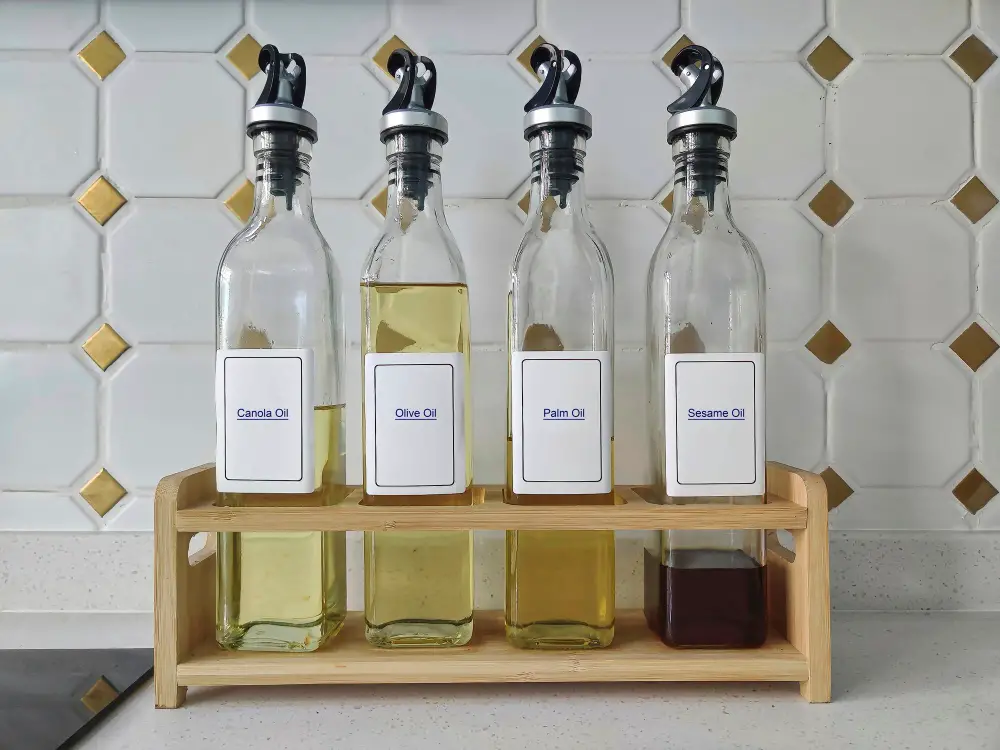
You can use different sizes of jars depending on the quantity you need to store. For example, larger jars work well for olive oil or vegetable oil, while smaller ones are ideal for balsamic vinegar or apple cider vinegar.
To keep things organized, consider labeling each jar with the type of oil or vinegar it contains. This will not only help you find what you need quickly but also add a decorative element to your kitchen decor.
When choosing which oils and vinegars to store in apothecary jars, opt for those that come in dark bottles as they protect against light exposure that can cause spoilage over time. Make sure the lids fit tightly so that air does not enter the jar causing oxidation.
Homemade Condiments
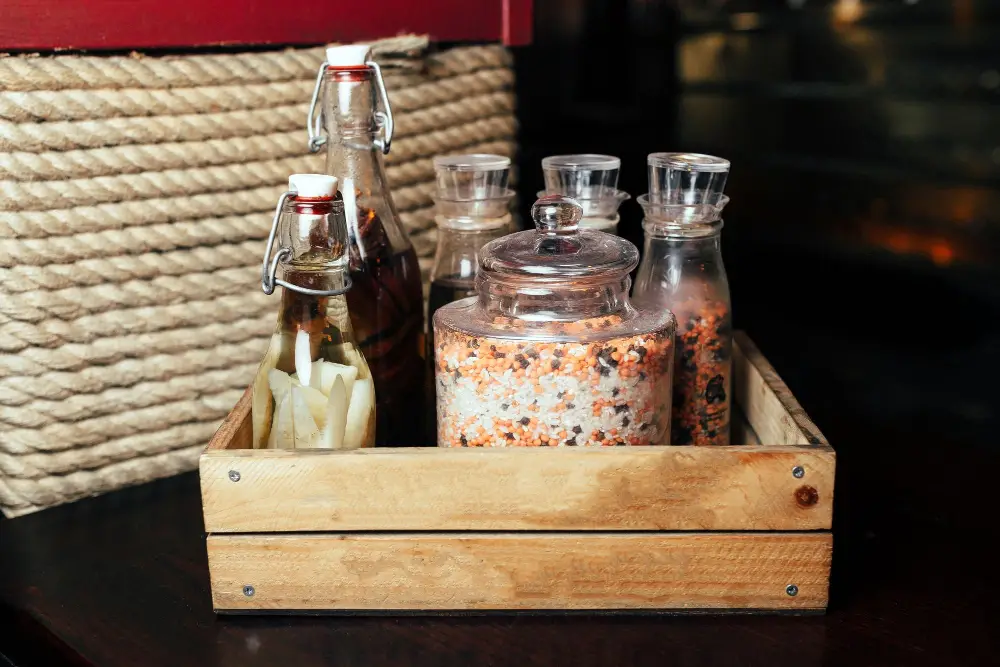
Not only do they look great on display in your kitchen but also make it easy to access these delicious additions to your meals. You can use small apothecary jars for individual servings or larger ones for family-sized portions.
Making homemade condiments is a fun and creative way to add flavor to your dishes while avoiding the preservatives found in store-bought options. Plus, you can customize them according to your taste preferences! Some popular choices include honey mustard dressing, balsamic vinaigrette sauce, garlic aioli dip or even hot sauce.
When filling apothecary jars with homemade condiments be sure that they are completely cooled before sealing them up tightly with an airtight lid. This will help preserve their freshness longer so that you can enjoy them whenever you want without worrying about spoilage.
Kitchen Gadgets and Utensils
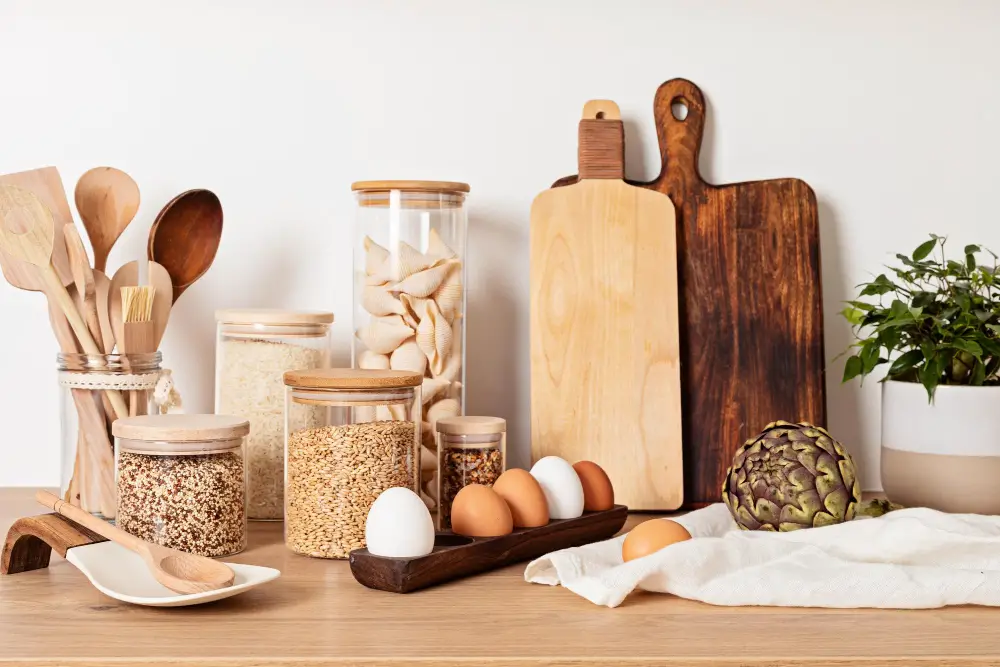
This is a great way to keep your countertop organized while still having everything you need within reach. You can use the jars for storing spatulas, whisks, tongs, and other frequently used tools.
For smaller items like measuring spoons or vegetable peelers, consider using mini apothecary jars that fit perfectly on a shelf or in a drawer.
Not only does this method of storage help declutter your workspace but it also adds an element of style to your kitchen decor. Choose utensils with colorful handles or unique designs that complement the overall aesthetic of your space.
When selecting which gadgets and utensils to store in apothecary jars, think about what you use most often and what would benefit from being easily accessible on the counter rather than hidden away in drawers or cabinets.
Reusable Cutlery and Straws

One way to do this is by using reusable cutlery and straws. Not only are they better for the environment than their disposable counterparts, but they also add a touch of elegance to your dining experience.
Apothecary jars can be used as storage containers for reusable cutlery and straws. You can fill them with bamboo or stainless steel utensils that you use daily or during special occasions such as dinner parties.
For the straws, choose ones made from materials like glass or metal that are easy to clean and maintain. Place them in an apothecary jar on your countertop so that everyone in the family knows where they are located when needed.
Herb and Plant Clippings
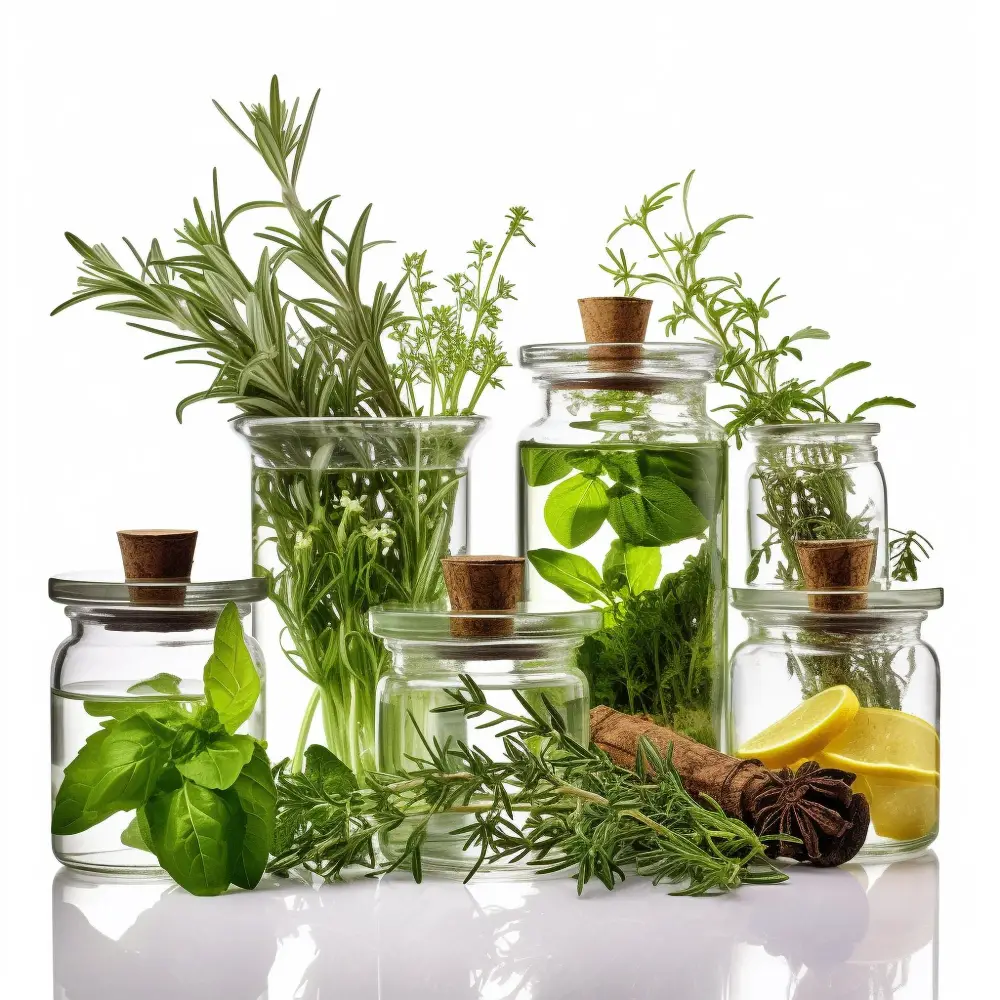
Not only do they add a pop of greenery to your kitchen, but they can also be used in cooking or as natural air purifiers. Simply snip off some fresh herbs like basil, mint, or rosemary from your garden and place them in the jar with water to keep them alive longer.
You can even propagate plant cuttings by placing them in water until roots form before transferring them into soil.
If you don’t have access to fresh herbs or plants, consider using dried ones instead! Dried lavender buds or eucalyptus leaves make beautiful decorative elements that will infuse your kitchen with their delightful scents.
Remember to change the water frequently if you’re keeping live clippings inside the jar.
Dessert Toppings and Candy
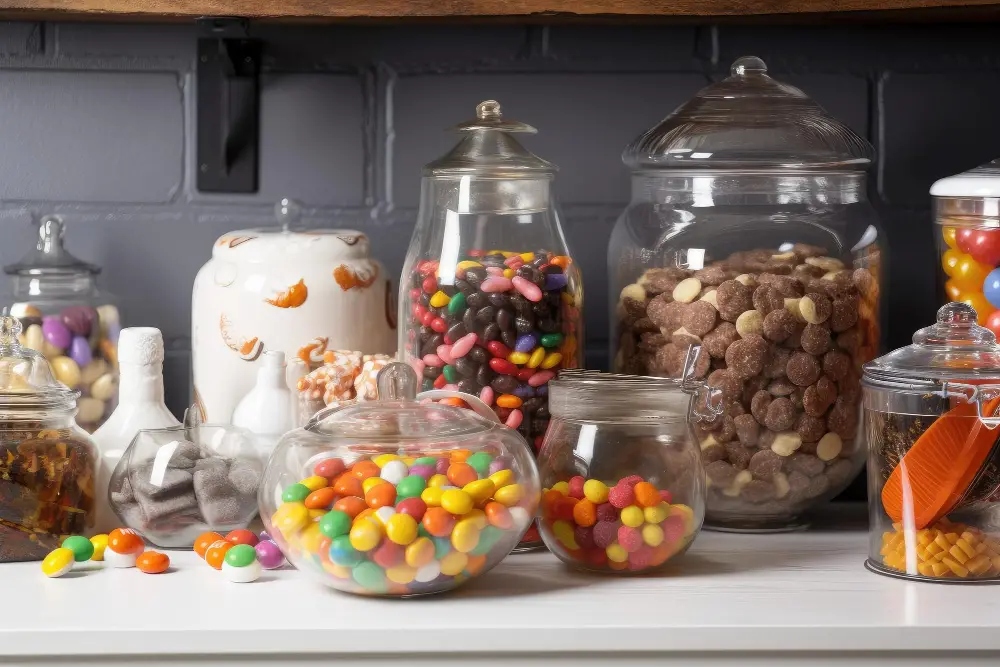
Fill them with colorful sprinkles, chocolate chips, gummy bears, or any other sweet treat that you love. Not only will it add a pop of color to your kitchen decor, but it will also make for an easy way to decorate desserts when entertaining guests.
You can even create a DIY sundae bar by filling different apothecary jars with various toppings such as crushed cookies or nuts. This is not only visually appealing but practical too since everyone gets their own jar of goodies without having multiple bags open at once.
When storing candy in apothecary jars in the kitchen, ensure they are tightly sealed so that moisture doesn’t get inside which could cause the sweets to become sticky or stale over time.
Apothecary jars are versatile storage containers that offer both functionality and style in your culinary space.
Fresh Produce Display
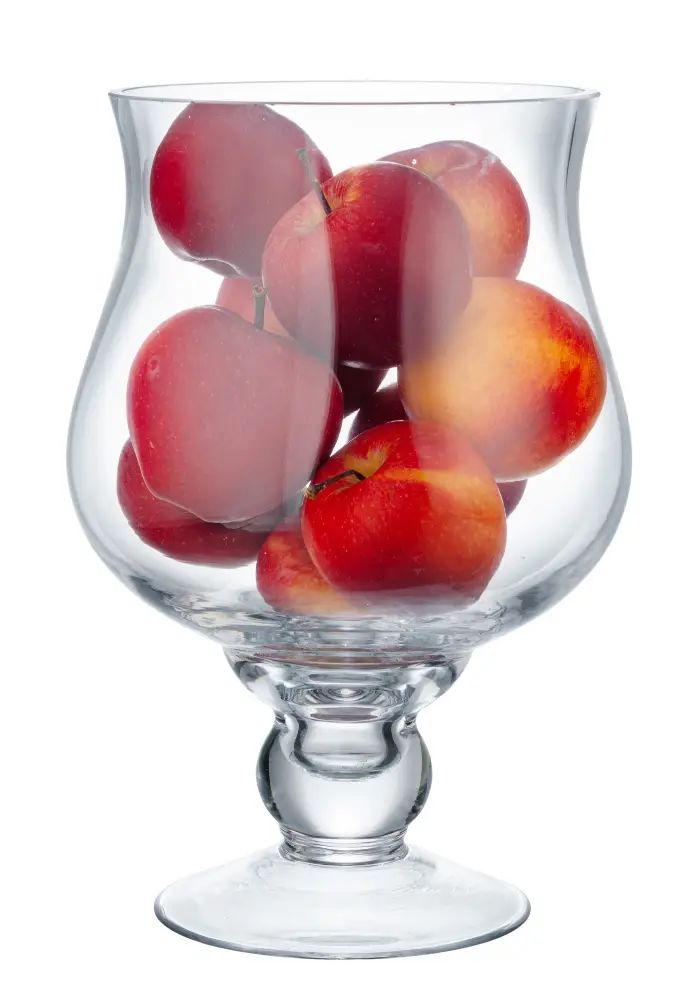
Fill the jars with colorful fruits or vegetables such as lemons, limes, oranges, apples, tomatoes or peppers. This not only adds a pop of color to your kitchen but also encourages healthy snacking habits by making it easy for you and your family members to grab a quick bite on-the-go.
You can even add some water at the bottom of the jar to keep cut fruits and veggies fresh for longer periods. Not only does this create an eye-catching centerpiece in your kitchen but it’s also practical since you’ll have easy access when cooking meals that require these ingredients.
Plus, using apothecary jars instead of traditional fruit bowls helps prevent bruising or damage from stacking items on top of each other. So next time you’re at the grocery store picking up some fresh produce don’t forget about how great they would look displayed in apothecary jars!
Preserved Fruits and Vegetables
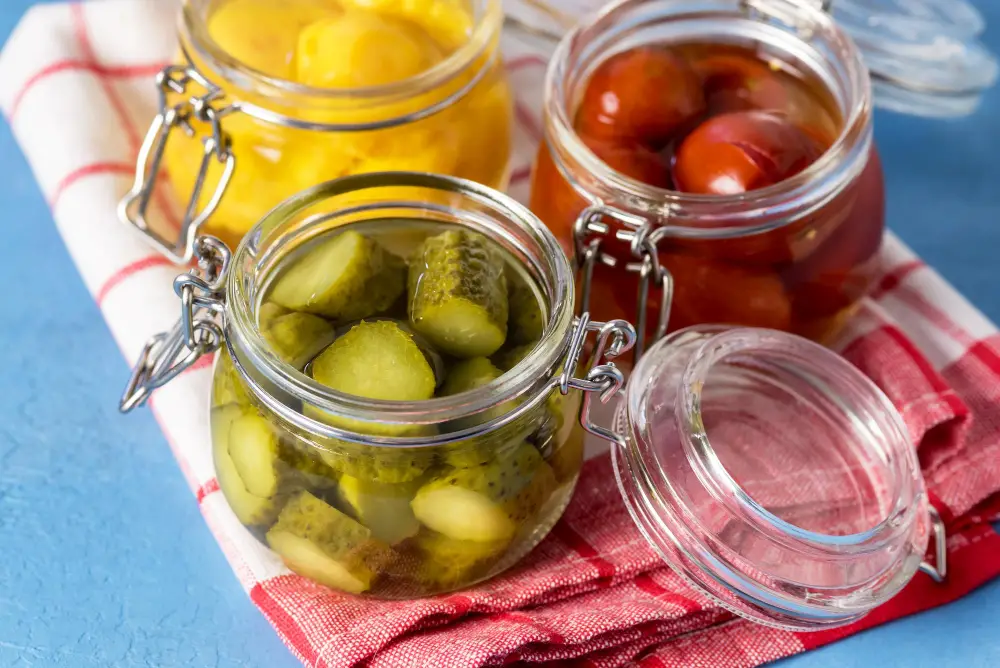
Apothecary jars are perfect for storing preserved foods, as they provide an airtight seal that keeps the contents fresh for longer periods. You can use these jars to store homemade jams, jellies, pickles, and chutneys.
They also make beautiful displays of colorful fruits like lemons or limes in syrup or candied ginger.
To preserve your own fruits and vegetables at home, you’ll need some basic equipment such as canning jars with lids and bands (or apothecary jars), a large pot for boiling water bath processing (if using traditional canning methods), tongs or jar lifters to handle hot containers safely.
Once you have everything ready, choose your favorite recipe from cookbooks or online resources that suit your taste buds best! Then follow the instructions carefully on how long each item should be processed before sealing it up tight inside its container – this will ensure maximum freshness over time without any spoilage occurring due to bacteria growth within them.
Preserved Fruits & Vegetables are not only delicious but also healthy options when stored properly in apothecary jars.
Creating Labels for Jars
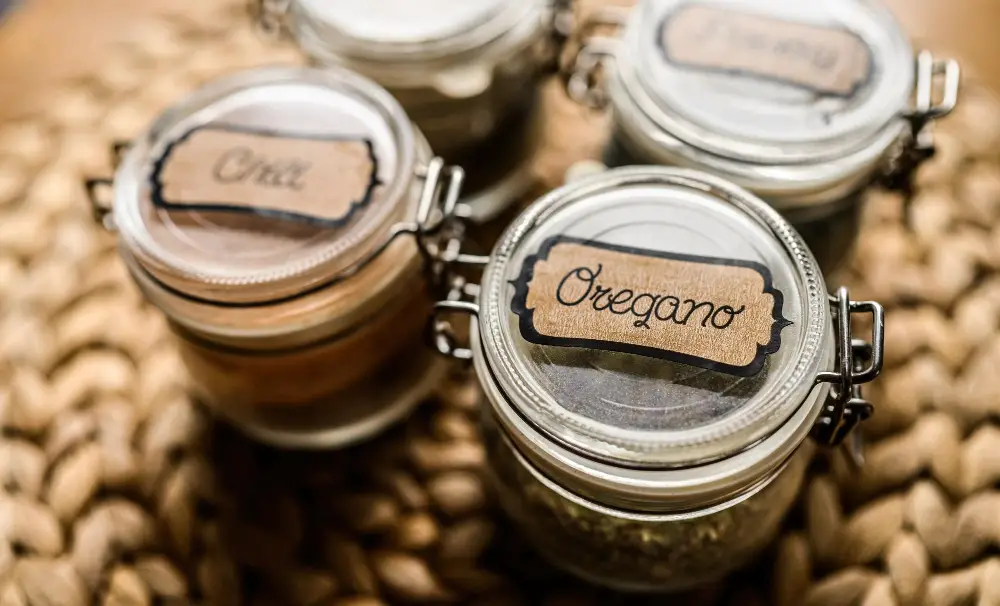
Not only does labeling help keep things organized and accessible, but it also adds a decorative touch to the jars. You can use pre-made labels or create your own using adhesive paper or chalkboard paint.
For a more rustic look, consider using kraft paper and twine to wrap around the jar lids. Alternatively, you can use vinyl lettering for a sleeker appearance that is easy to read.
When creating labels for your apothecary jars in the kitchen, be sure to include important information such as expiration dates and cooking instructions if necessary. This will ensure that everything stays fresh and safe while adding an extra layer of convenience when preparing meals.
Cleaning and Maintaining Jars
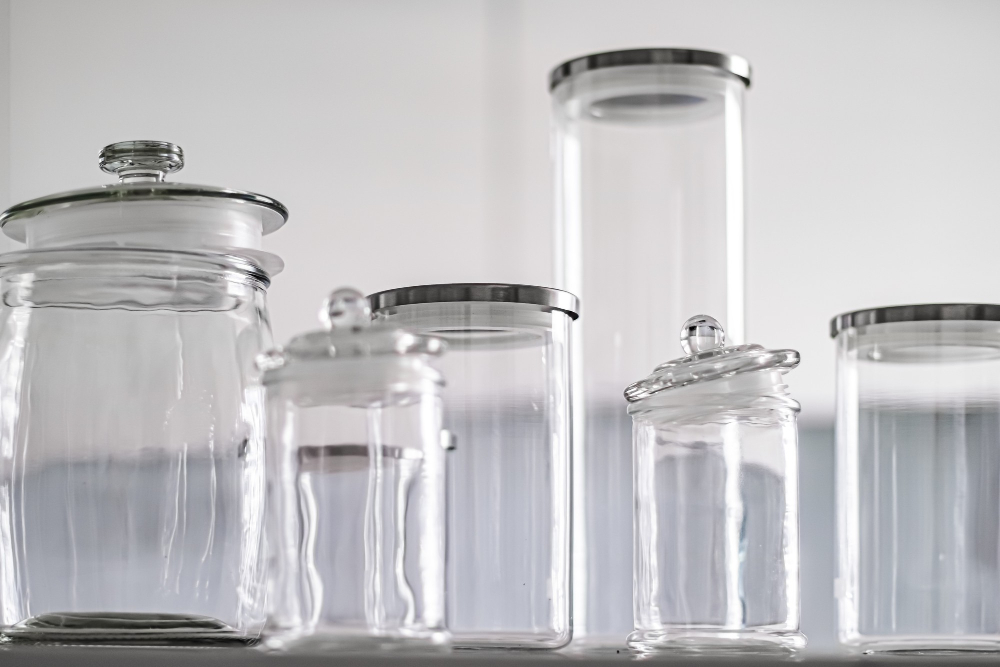
Here are some tips for cleaning and maintaining your jars:
1. Hand wash the jars: Avoid putting the glass containers in a dishwasher as they may break or get damaged.
2. Use mild soap: When washing, use a gentle dishwashing liquid that won’t leave any residue on the jar.
3. Dry thoroughly: After washing, make sure to dry each jar completely before refilling it with food items.
4. Store in a cool place: Keep your apothecary jars away from direct sunlight or heat sources that can cause damage over time.
5. Check for cracks or chips regularly: Inspect each jar periodically for any signs of wear and tear such as cracks or chips on its surface; if found dispose of them immediately.
Safety Tips and Considerations
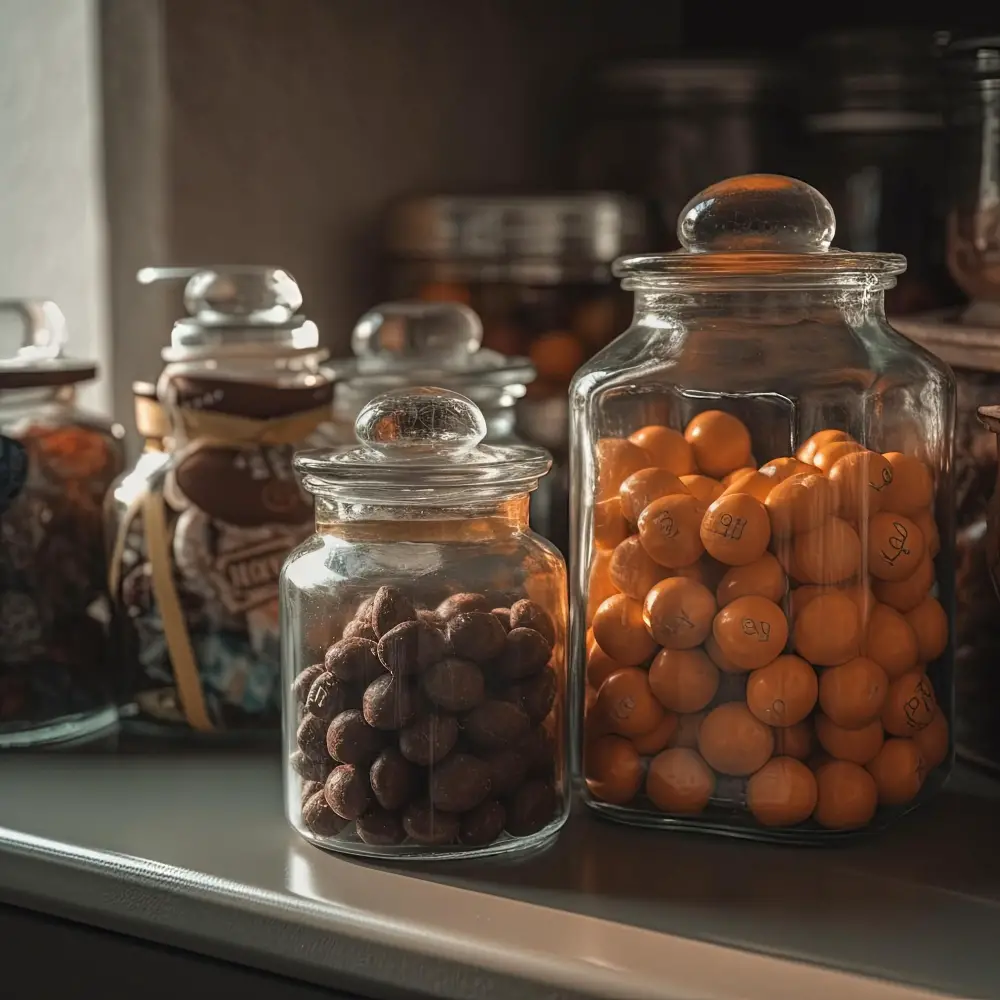
Here are some tips and considerations to keep in mind:
- Choose sturdy and durable jars that can withstand high temperatures.
- Avoid storing liquids or foods that may spoil quickly, as this can lead to bacterial growth.
- Keep your jars away from direct sunlight or heat sources, which could cause them to crack or break.
- Label your jars clearly with the contents and date of storage for easy identification and rotation of perishable items.
- Regularly clean your apothecary jars with warm soapy water before refilling them.
FAQ
What can I put in a glass jar for in the kitchen?
In a glass jar, you can store pantry items such as grains, pasta, beans, nuts, seeds, baking supplies like flour, sugar, and chocolate chips, and even items like muffin tin liners.
What should I fill a jar with?
You should fill a jar with dry organic materials like moss, grass, shells, sand, rocks, and pebbles, as they are visually appealing, unique, and budget-friendly.
What are some creative ways to display spices in apothecary jars?
Some creative ways to display spices in apothecary jars include arranging them on tiered shelves, using a spice rack, grouping by color or cuisine, and incorporating them into a decorative centerpiece.
How can I utilize apothecary jars for organizing my baking ingredients?
To utilize apothecary jars for organizing baking ingredients, simply fill the jars with various ingredients such as flour, sugar, or baking soda and label them for convenient access and an aesthetically pleasing display.
What are the best food items to store in apothecary jars for both functionality and aesthetic appeal?
The best food items to store in apothecary jars for both functionality and aesthetic appeal include herbs and spices, dry pasta, coffee beans, tea leaves, and various types of sweets or candy.




